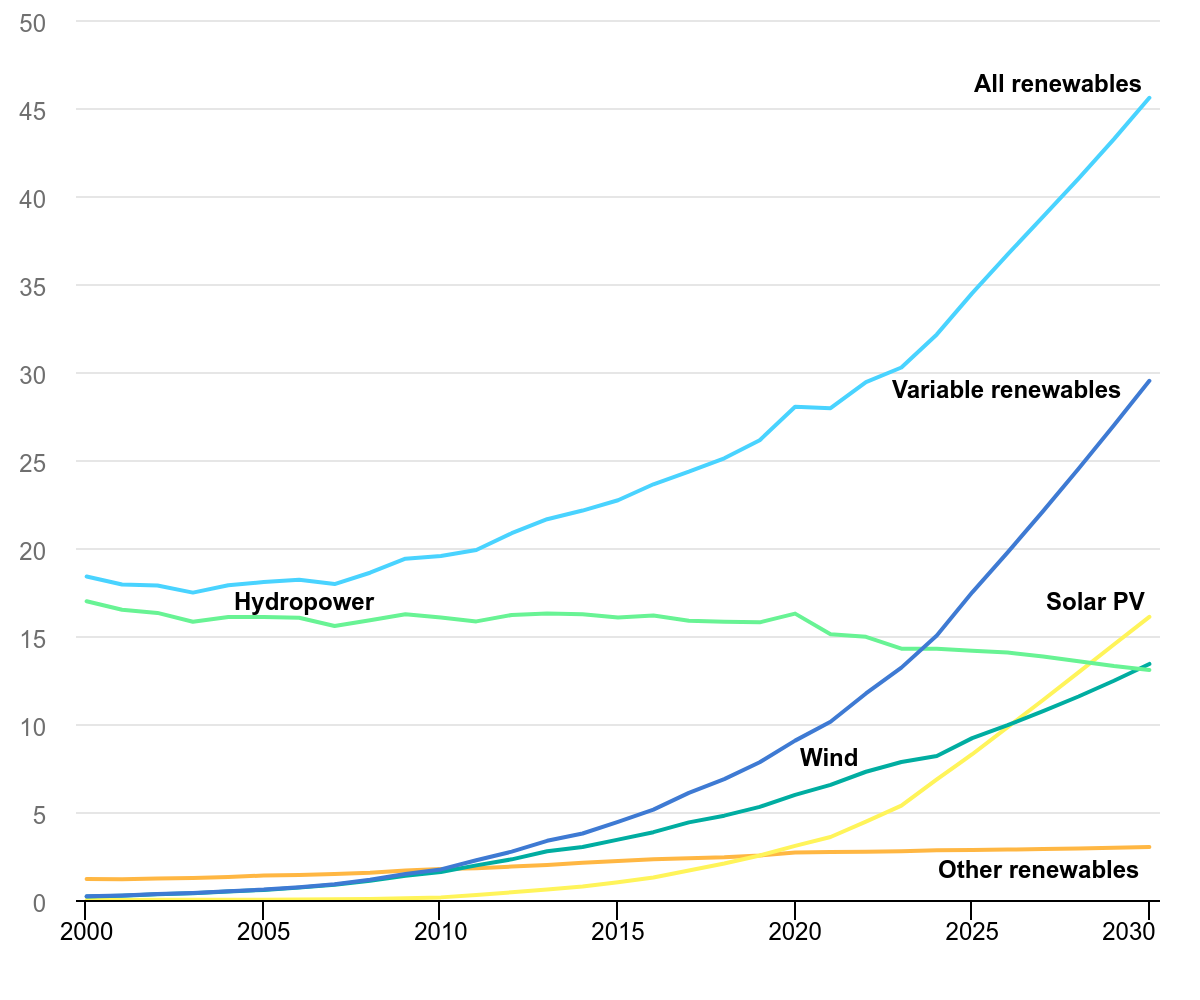
Environmental awareness is increasing with the developing world. The global perspective, especially in developed economies, is directed towards green energy. While moving towards electrification, emphasis is also placed on ensuring this transformation with green energy sources. The most important problem faced by market actors during this transformation and development was reducing costs. While being environmentally friendly, it was necessary to produce sustainable, safe and low-cost solutions. In line with this goal, renewable energy investments came to the fore and gained momentum. In the graph below, you can see the share of global renewable electricity production by technology.
In the graph below, you can see the change in the share of renewable energy production on a global scale over the years:

• Hydropower
• Wind
• Solar PV
• Other Renewables
• All Renewables
• Variable Renewables
Until recently, cost was a significant obstacle in efforts to bring renewable energy to the forefront in green transformation. However, thanks to technological developments, promising progress is now being made in this area. While the developments in terms of costs are promising, the increase in the share of seasonal and condition-based production in total production has brought another issue to the forefront more than it should be. Integration… Ensuring regional production and consumption balance, not interrupting energy supply regardless of changing conditions, and meeting the demand for secure energy and increasing comfort are also required. This requirement necessitates operating base load-providing productions in integration with condition-dependent production sources.
- Log in to post comments

